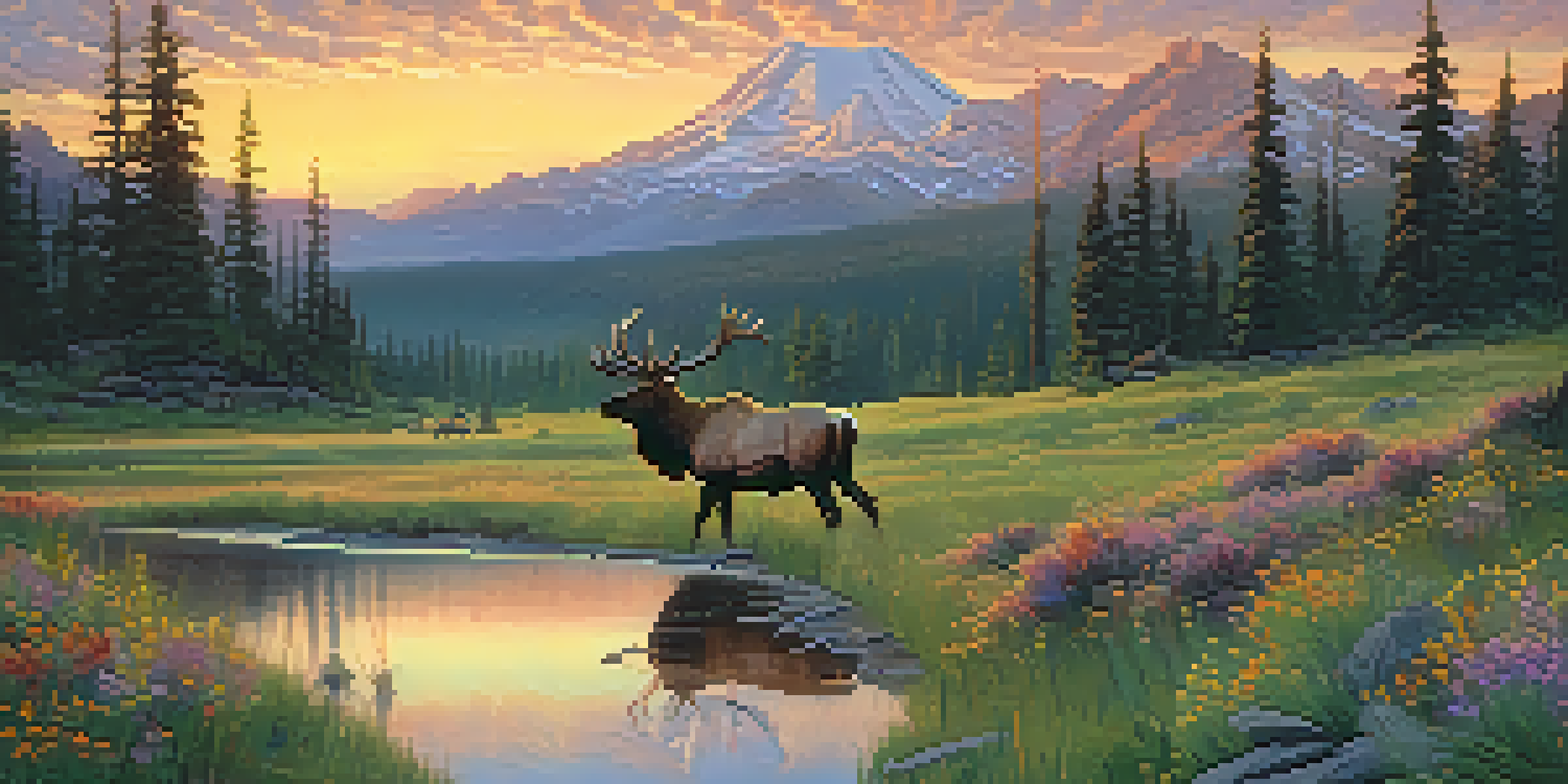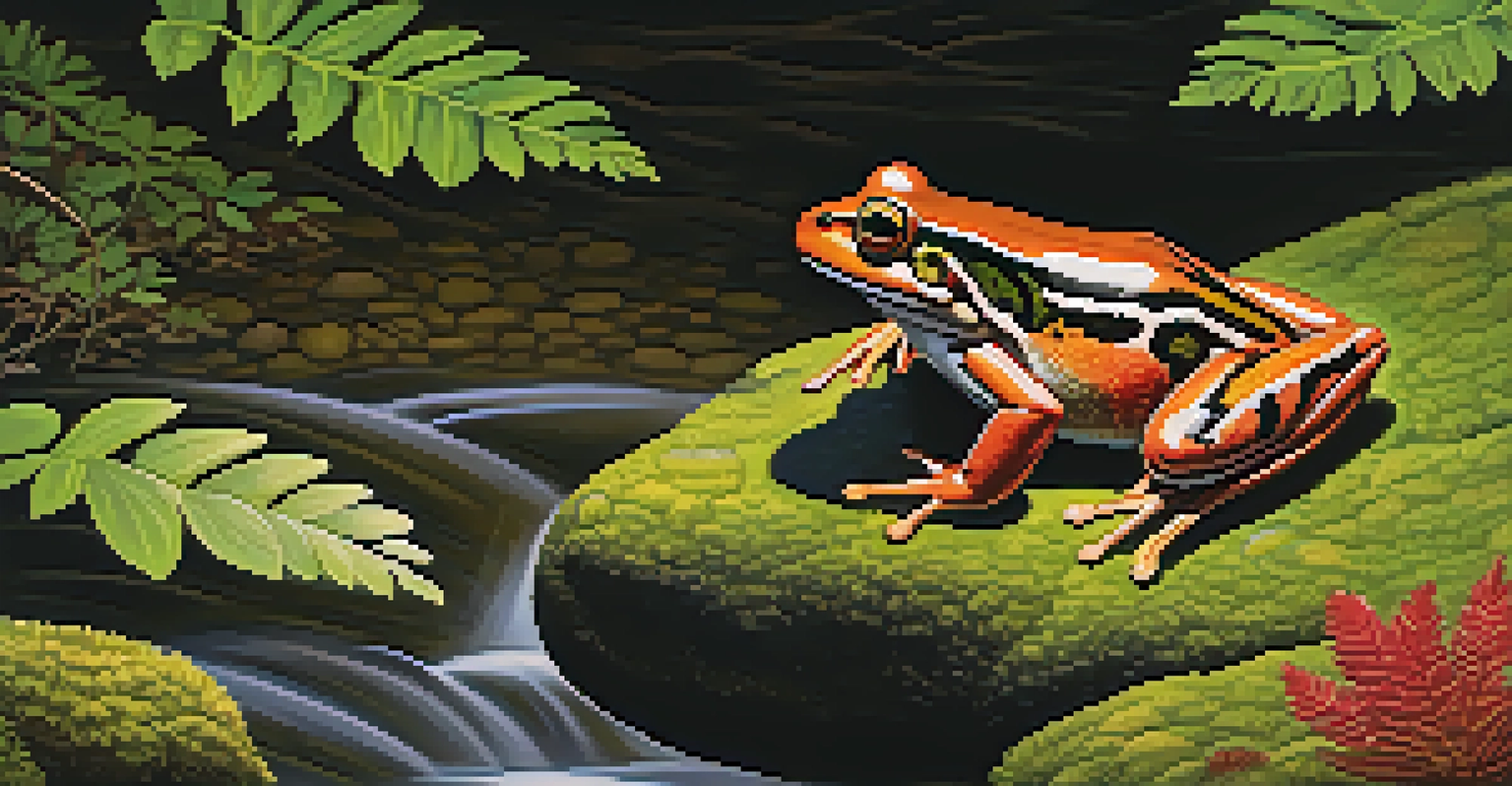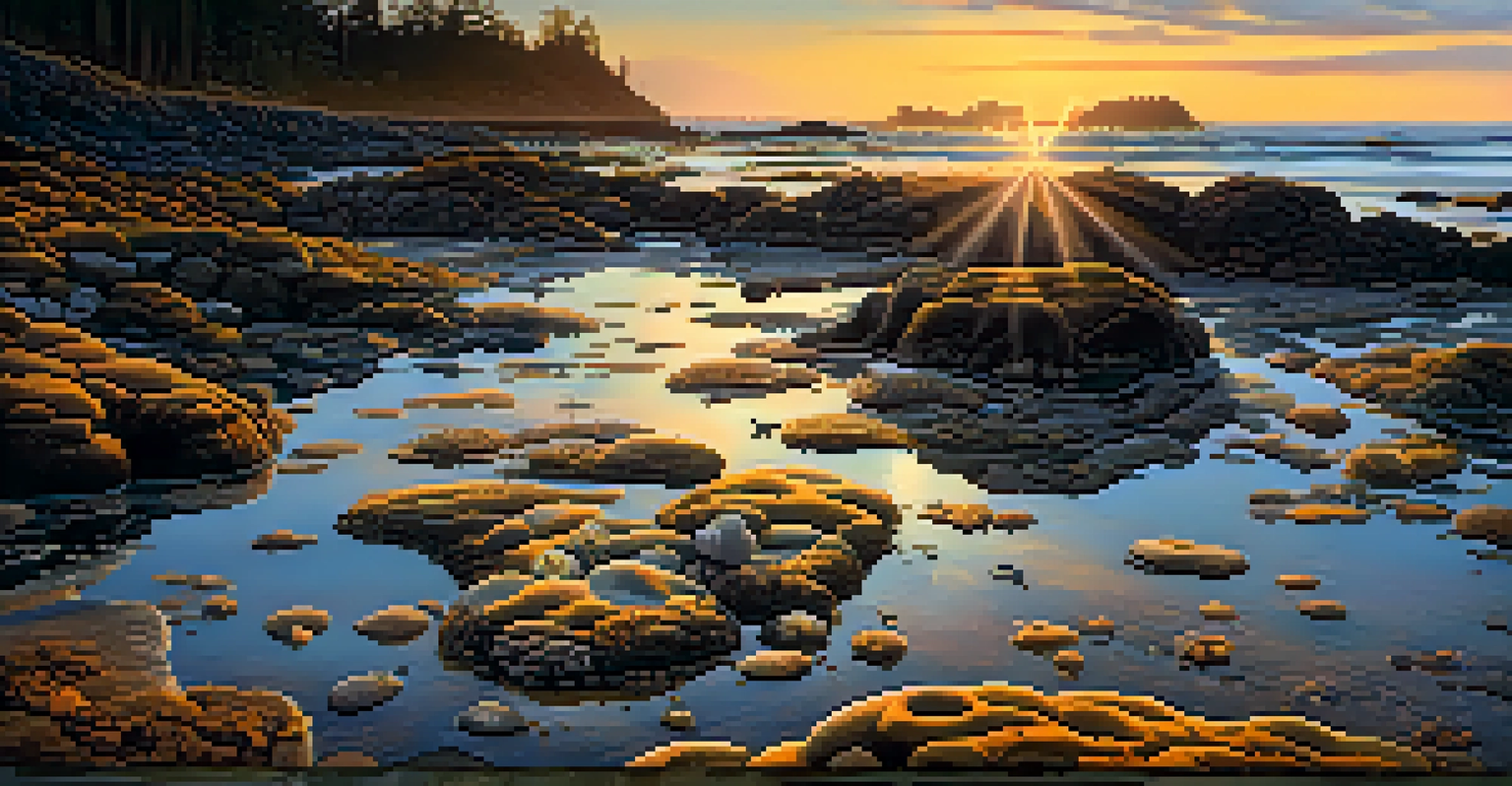Wildlife in Washington: A Naturalist's Guide to Diverse Species

Introduction to Washington's Unique Ecosystems
Washington State is a treasure trove of diverse ecosystems, ranging from lush rainforests to arid deserts. This remarkable variety creates habitats for an incredible array of wildlife. Each region hosts its own unique species, making it a paradise for naturalists and wildlife enthusiasts alike.
In every walk with nature one receives far more than he seeks.
From the towering peaks of the Cascades to the coastal shores of the Pacific, the state's geography plays a crucial role in supporting biodiversity. The interplay between these different environments fosters a complex web of life where various species thrive. Understanding these ecosystems is key to appreciating the wildlife they support.
As you explore Washington, you will encounter everything from majestic elk in the Olympic National Park to vibrant seabirds along the coast. This guide aims to highlight these unique species and the ecosystems they inhabit, providing a deeper understanding of Washington's wildlife.
Mammals of Washington: A Diverse Collection
Washington is home to a fascinating variety of mammals, each adapted to their specific habitats. From the iconic black bear roaming the forests to the elusive river otter playing in the waterways, these creatures contribute to the state's rich ecological tapestry. Observing them in their natural environment can be a thrilling experience for any nature lover.

The state also hosts larger mammals, such as moose and elk, which can often be seen grazing in open fields or along the edges of woodlands. These majestic animals are not only a sight to behold but also play vital roles in maintaining the health of their ecosystems. Their grazing habits help shape the landscape and promote new plant growth.
Diverse Ecosystems in Washington
Washington State boasts a rich variety of ecosystems that support an incredible array of wildlife.
In addition to these well-known species, Washington has a plethora of smaller mammals like the playful Douglas squirrel and the elusive bobcat. Each of these mammals has unique behaviors and adaptations that make them fascinating subjects for observation and study.
Birdwatching in Washington: A Bird Lover's Paradise
Birdwatchers will find Washington an absolute paradise, boasting over 400 species of birds. From the vibrant western tanager to the majestic bald eagle, the state's diverse habitats attract a wide variety of avian life. The changing seasons bring different species, making every visit to a natural area a new adventure.
The Earth has music for those who listen.
Wetlands, forests, and coastal regions offer prime opportunities for spotting birds in their natural habitats. Whether you're hiking in the Cascades or strolling along the coast, keep your eyes peeled for the colorful array of birds that call Washington home. Many parks even host bird festivals that celebrate this avian diversity, inviting enthusiasts to participate.
For those new to birdwatching, Washington’s parks and refuges often provide guided tours and educational programs. These experiences can enhance your understanding of bird behavior and ecology, allowing you to appreciate the intricate lives of these feathered residents even more.
Reptiles and Amphibians: The Hidden Gems of Washington
While often overlooked, Washington is home to a surprising variety of reptiles and amphibians. From the vibrant red-legged frog to the elusive rubber boa, these creatures play essential roles in their ecosystems as both predators and prey. Their presence indicates the health of the environment, making them important indicators of ecological balance.
Many of these species are adapted to specific habitats, so exploring different environments can yield fascinating discoveries. For example, the western pond turtle thrives in aquatic environments, while the common garter snake can often be found basking in sunny clearings. Learning about their unique adaptations can deepen your appreciation for the diversity of life in Washington.
Unique Wildlife Conservation Needs
Many species in Washington face significant threats from habitat loss and climate change, highlighting the need for conservation efforts.
Conservation efforts are crucial for these often-misunderstood animals, as many face threats from habitat loss and climate change. By supporting local conservation initiatives, you can help ensure that these hidden gems continue to thrive in the wild.
Marine Life: Exploring Washington's Coastal Wonders
Washington's coastal waters are teeming with marine life, making it a hotspot for ocean enthusiasts. The diverse marine ecosystems, from tide pools to deep-sea habitats, support a wide array of species, including sea otters, harbor seals, and even migrating gray whales. Each visit to the coast can reveal new wonders beneath the waves.
Tide pooling is a popular activity that allows visitors to get up close with fascinating creatures like anemones, starfish, and crabs. These ecosystems are delicate and require respectful exploration to ensure their preservation. Understanding the interdependence of species in these habitats enhances our responsibility to protect them.
The Pacific Northwest is also known for its thriving fishing industry, with salmon being a keystone species in both the ecosystem and local culture. These fish not only support the food web but also hold significant cultural and economic importance for many communities along the coast.
Conservation Challenges: Protecting Washington's Wildlife
Despite its rich biodiversity, Washington's wildlife faces significant conservation challenges. Habitat loss due to urban development, climate change, and pollution threatens many species. Awareness and action are crucial to ensure that these natural treasures are preserved for future generations.
Many organizations and initiatives are working tirelessly to protect wildlife and their habitats. Conservation efforts include habitat restoration projects, wildlife corridors, and educational programs aimed at fostering a deeper connection between the public and nature. Engaging with these initiatives can empower individuals to make a difference in their communities.
Birdwatching and Marine Life
With over 400 bird species and vibrant marine life, Washington offers countless opportunities for nature enthusiasts to explore.
As nature lovers, we can all play a role in conservation by practicing responsible outdoor recreation and supporting local wildlife organizations. Every small action counts, whether it's volunteering for clean-up events or advocating for sustainable practices in our daily lives.
Resources for Nature Enthusiasts in Washington
For those eager to explore Washington's wildlife, numerous resources are available to enhance your experience. Local parks and wildlife refuges often provide educational materials, guided tours, and volunteer opportunities. Websites and apps dedicated to wildlife tracking can also help you identify species and learn more about their habits.
Field guides specific to Washington's flora and fauna can be invaluable tools for both beginners and seasoned naturalists. These guides typically include illustrations and descriptions that make identification easier. Many local bookstores and online retailers offer these resources, allowing you to deepen your knowledge before hitting the trails.

Joining local nature groups or participating in wildlife events can also connect you with like-minded enthusiasts. These communities often share valuable experiences and knowledge, enriching your understanding of Washington's incredible wildlife and ecosystems.